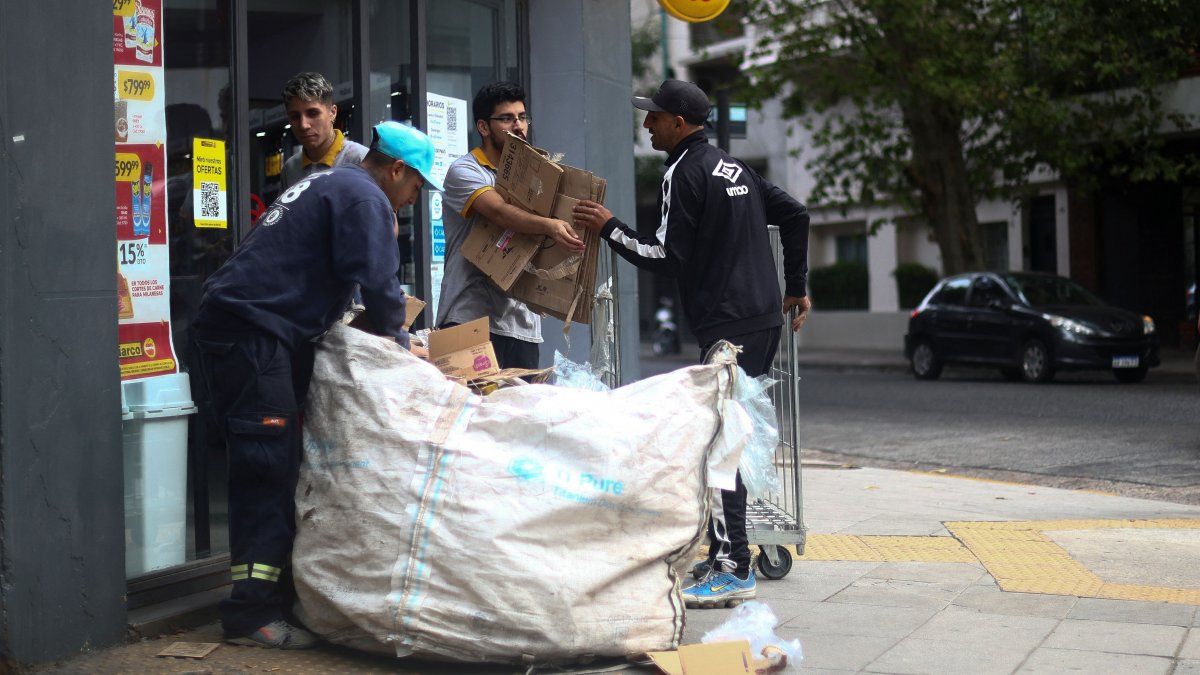“Contrary to the official discourse, which maintains that the private sector will absorb the job offer resulting from massive layoffs in the State, the collapse deepens”specified the Center for Argentine Political Economy (CEPA).
For its part, the study of Institute of Studies and Training (IEF-CTA AUTONOMOUS) resumes job losses from August 2023 to February 2024, where the destruction of jobs amounts to 94,070 (-1.5%). “Although this is a very significant drop, it is still lower in magnitude than at the end of 2018 and 2019”highlights the report.
In March, the industry fell 21% year-on-year and the installed capacity collapsed to 53.4%While the construction fell 33% year-on-yearespecially for the brake on public works. The general activity index fell 9.7% year-on-year in Marchas measured by Orlando Ferreres & Associates.
In that context, the employment outlook for March does not improve. The Labor Indicators Survey (EIL)which surveys the level of employment in some 3,500 companies in urban agglomerations, estimates a drop of another 34,166 positions in the private sector during the third month of the year.
X-ray of private employment in Argentina
Given the negative indicators of the economy, the companies began to furlough employees as it happened in F.V.producer of taps, which stopped 800 workers. The company agreed to a scheme with the Metallurgical Workers Union (UOM)which contemplates the reduction of the working day for three months: 7 days in May, 7 days in June and 8 days in July with the payment of 80% of salaryas specified to Ambit Diego Especheholder of the section of San Miguel.
“The situation from now on is hopeless., unlike the pandemic, where we knew that it would improve when the health emergency was lifted; now no improvement is foreseen. We produced 20 tons and we are making 3. There are no orders. In June we will have to sit down and talk again“, explained the head of the San Miguel section.
Although in other companies the decision was more drastic and taking into account that the economic situation has worsened in recent months, they have already begun to reduce some of their workers. Whirlpoolwhite goods company, terminated 60 temporary contracts and ChangoMás laid off 152 people in eight branches. There were also cuts and withdrawals in Pepsico, General Motors, renault and toyota.
Among the areas hardest hit by unemployment is constructionwhich since the paralysis of public workshe already lost 100,000 jobsas specified Gustavo Weisspresident of the Argentine Chamber of Construction (CAC). In February alone, according to the CEPA report, it lost 12,949 workers, being the sector with the greatest drop in employment.
The two most important sectors in terms of job creation are trade and industrywho have a 19.5% and 18.8% of the total universe of private employees, respectively. According to CEPA, The industrial sector lost 5,520 jobs between December and February.
Thus, the production and consumption crisis is slowly being translated into a employment crisiswhich does not correspond to the expectations of the Government of a quick recovery and explain the resurgence of labor unrest.
Other types of registered employment
It should be noted that, given the loss of formal jobs, other forms of registered employment increased, such as monotributistasthat have retirement contributions and access to a social work, but not other labor rights such as bonuses, paid vacations or licenses. This category had a growth of 9,375 positions in the last month.
However, as part of the employment crisis, jobs in private homes were reduced by 1,497 during February and so far in the Milei government, within this category, 5,903 jobs have been destroyed, according to the report from STRAIN.
Unregistered employment
As the formal labor market contracts, inevitably the informal it does too. However, we will not have these data until the next Permanent Household Survey published by INDEC.
The economist and director of Productive Planning at the public policy center Fundar, Daniel Schteingartconsidered that the unemployment rate is going to “go up a couple of points”since it is at 5.7% during the last quarter of 2024. But he noted that it is “difficult” for him to believe that in the first quarter it will return to double digits.
Increase in poverty due to unemployment
In the middle of the employment crisis and after the strong devaluation of the peso in December (54%), Salaries lost sharply against inflation in the Milei government (December to February). Although in the second month of the year the average salary won the inflation (16% vs. 13.2%, respectively), those of the median they just went up 12.8% and they lost to the CPI (13.2%).
This way, salaries accumulated in the Milei era (December February) a real fall of 6.2% and 9.7% measured by average and median, respectively. “An unprecedented fall in such a short term”he pointed out CEPA.
In a context of strong loss of real salarypoverty continues to increase and during The first quarter of 2024 affected, on average, 55% of Argentinesas reported by the Director of the UCA Social Law Observatory, Augustine Salviain Radio Rivadavia.
Even according to a national survey conducted by Team Measuresthe poverty became the main concern of Argentines and dethroned inflation after two years.
The survey, which compiled the opinions of 1,842 citizens throughout the country, shows that The issue that most worries Argentines is povertybeing elected by 18% of those consulted, while the inflation, came in second place with 15%. Third was located corruptionwith a 12% and closely, they follow unsafety and the unemployment with a eleven%.
Source: Ambito




